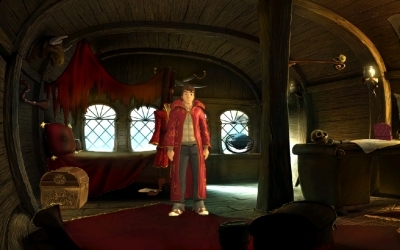

If you enjoyed reading this, please consider buying me a (virtual) coffee on Ko-Fi.Ma'-gus (Simon, Greek form of Hebrew shim`on Gesenius gives the meaning of the Hebrew word as "hearing with acceptance" it is formed from shama`, "to hear"):Ĩ. But, compared to the charm of its predecessor, it is a disappointment. The puzzles are still solid and it does have some great moments, like finding a group of RPG players getting engrossed in a game where they’re all roleplaying as office workers. This isn’t to say that Simon 2 is irredeemably bad or anything. His voice acting’s not up to much, unfortunately, but we at least get some real sense of jeopardy underpinning the story, which is more cohesively constructed than the first’s in general. One improvement present over the original Simon The Sorcerer is that we get to see more of villain Sordid, through constant cut-scenes. But the unnamed world of Simon 2 is never in any danger of being as well realised as Ankh-Morpork. Like Simon’s red robes, the infusion of modern, real-world elements into Simon’s fantasy world actually makes it feel more like Discworld, which from early on (and certainly by the time this game was made) had set-up Ankh-Morpork as a modern city in a fantasy world, with pastiches of modern university culture, policing, marketing, insurance and more.
Simon the sorcerer 6 between worlds full#
That is all but demolished by McSwampies, a full on McDonalds parody run by the annoying Swamp Monster from the first game, because who didn’t want more of him? A decent gag about their reaction to home invasion? Maybe, but it diminishes the charming fairy tale world created in the original.

The Three Bears (of Goldilocks fame) live in a suburban detached covered in CCTV and security devices. The main town is essentially a 17th century British port town in design. The fairy tale elements are still present, but there’s a much more urban setting to everything. The world of Simon 2 feels much changed to that from the first game. Partly this is due to the script leaning more that way too. Any nuance of contextual stress or hormonally imbalanced etiquette deficiencies are washed away by a voice acting job that seems to relish the insults and general meanness. You could convincingly put his more obnoxious qualities down to his age and the unusual situation he’d found himself in. Just like how Barrie makes Red Dwarf’s Rimmer a total twat, but one you still want to spend time with, Simon was a bit of a loveable dick, if even that. Sure, he was a sarky, obnoxious teen, but he was still endearing with it. You see, Barrie managed to create a balance in Simon’s character. Instead, he’s replaced by Brian Bowles, which is a change of great significance. The biggest is that Chris Barrie no longer provides his voice. Those aren’t the only changes to Simon though. Although, come on, the purple look is much better than red, which makes Simon look far too much like Rincewind, or at least what Rincewind should look like (the pseudo-Gandolf, big beardy design he has in the Psygnosis games, thanks to the book covers, is completely at odds with his descriptions in the books). He now has a ponytail and his hat and robes are red rather than purple. Other cosmetic changes are focused on Simon. It’s nothing more than a cosmetic change, but an encouraging one (until you realise the inventory icons are now smaller and look worse, but let’s gloss over that). The lower screen interface has been given a face lift, with the verb tray split around a central inventory and using slightly obtuse icons. On the face of it, everything’s business as usual just with a few minor upgrades. Simon 2 is perhaps my first experience with that disappoint, of a sequel failing to live up to the original. Or maybe it’s just a great prospect, because it rarely works out as well as you hope. Getting more of your favourite game, especially when you weren’t expecting it, is a great feeling. So the entire existence of Simon The Sorcerer 2 was a huge surprise to me, when I stumbled upon the double pack of it and the original, years after its release.
Simon the sorcerer 6 between worlds Pc#
Between then, it was just the odd issue of PC Format, which was as much about word processors as games.Īll of which is to say, I wasn’t up on what games were out, new, or due. Some Club Nintendos in the early 90s (mostly talking about games I did not and would never own) and then Nintendo mags again in the late 90s, the N64 era. I didn’t read many gaming magazines when I was kid.


 0 kommentar(er)
0 kommentar(er)
